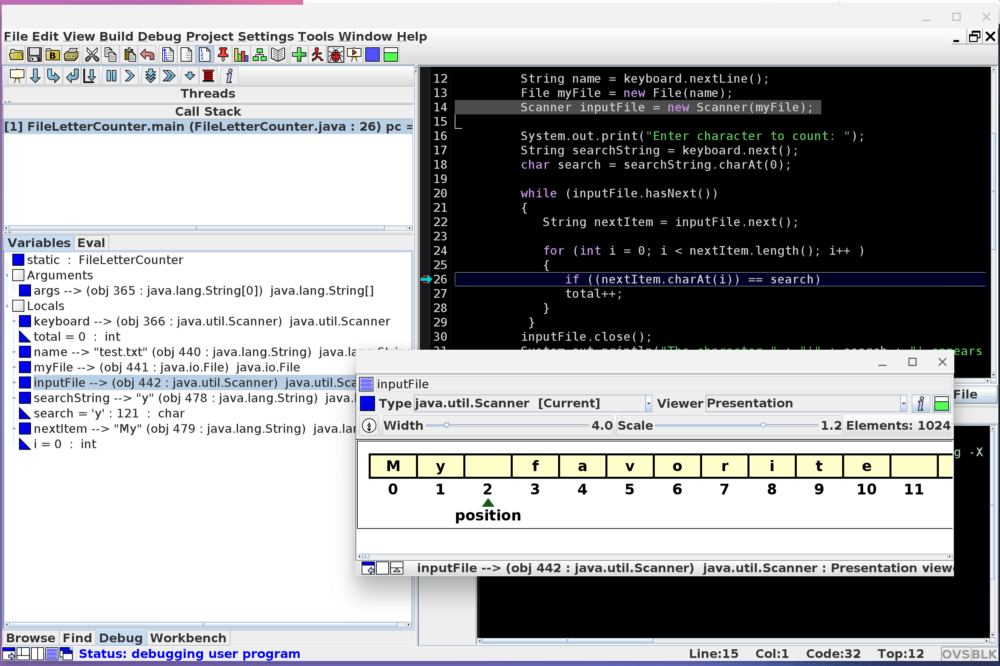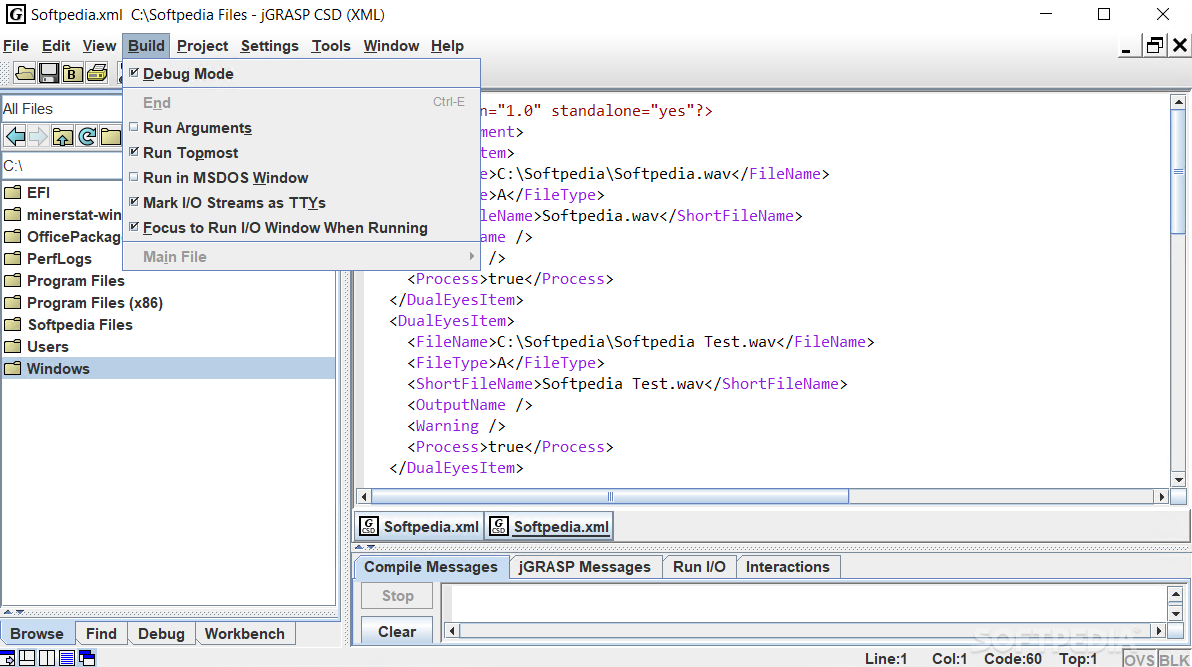

If you're running a program that uses variables, all of the variables' values will be shown on the left as well.
Jgrasp debugger eval code#
The result is the following:Īny output that results from the code as it is being run will appear in the bottom console pane. For example, we'll Step In to the call of drawEgg from our previous example.

The most useful of these buttons is Step In, so if you only learn to use one of them, make it that one. Auto Step: When you turn on this button and then press Step Over/In/Out, it will repeatedly perform that action.Resume: Tells the program to continue executing until it is finished, or until another breakpoint is encountered.Run to Cursor: Executes lines until reaching the line where your keyboard cursor is sitting.(If you click this while in your main method, it runs the rest of your entire program.) Step Out: Executes all remaining lines of the method you are currently in, and returns to the place from which it was called.If the current line is a method call, jumps inside that method and pauses at its first line of code. If the current line is a method call, runs that entire method call. From left to right, their behavior is the following: These buttons control the execution of the debugger. Notice that near the top-left corner of jGRASP, there is a new set of buttons. The next line to execute will be highlighted. The program will run until it hits the line of your breakpoint. Once you have set the breakpoint, compile your program (if you haven't already) and then press the ladybug icon to run it in debugging mode. (One good place to set a breakpoint is on the first line inside your main method, so that you can step through the entire program's execution.) To set a breakpoint, move your mouse cursor to the left margin of your file's editor window until the cursor becomes a stop sign, and press the left mouse button. To use it, first you must tell jGRASP where to pause the execution this is called a breakpoint. From there, you can run each line one at a time and see the results. The debugger lets you run your program partially and then stop it. jGRASP interactions pane tutorial video by the jGRASP authors.

Thanks in advance for any suggestions.JGRASP debugger tutorial video by the jGRASP authors end getInputSince this specific error only presented itself after I started changing my loops around, I wanted to know if anyone could point out what part of the nesting might be contributing to it. Here's enough of the program to compile, some methods are clipped out for brevity: I fussed around with it and now I get an error I can't seem to debug on my own. My only problem was that at input E, program hung instead of quit. I could get the int and the expression String, evaluate it (correctly, which seems to have broken since) and receive the following Strings where applicable. The user can keep entering these values until they submit a capital E char.įor a while, I had this structure of loops almost working right.
Jgrasp debugger eval series#
If it's valid, the next series of inputs should be Strings representing boolean values. Based on the number and the contents of the String, I evaluate the statement. First incoming value should be an integer, the second is a String. Trying to write a method that receives input on a loop.


 0 kommentar(er)
0 kommentar(er)
